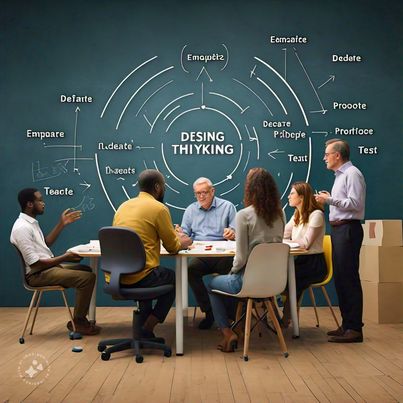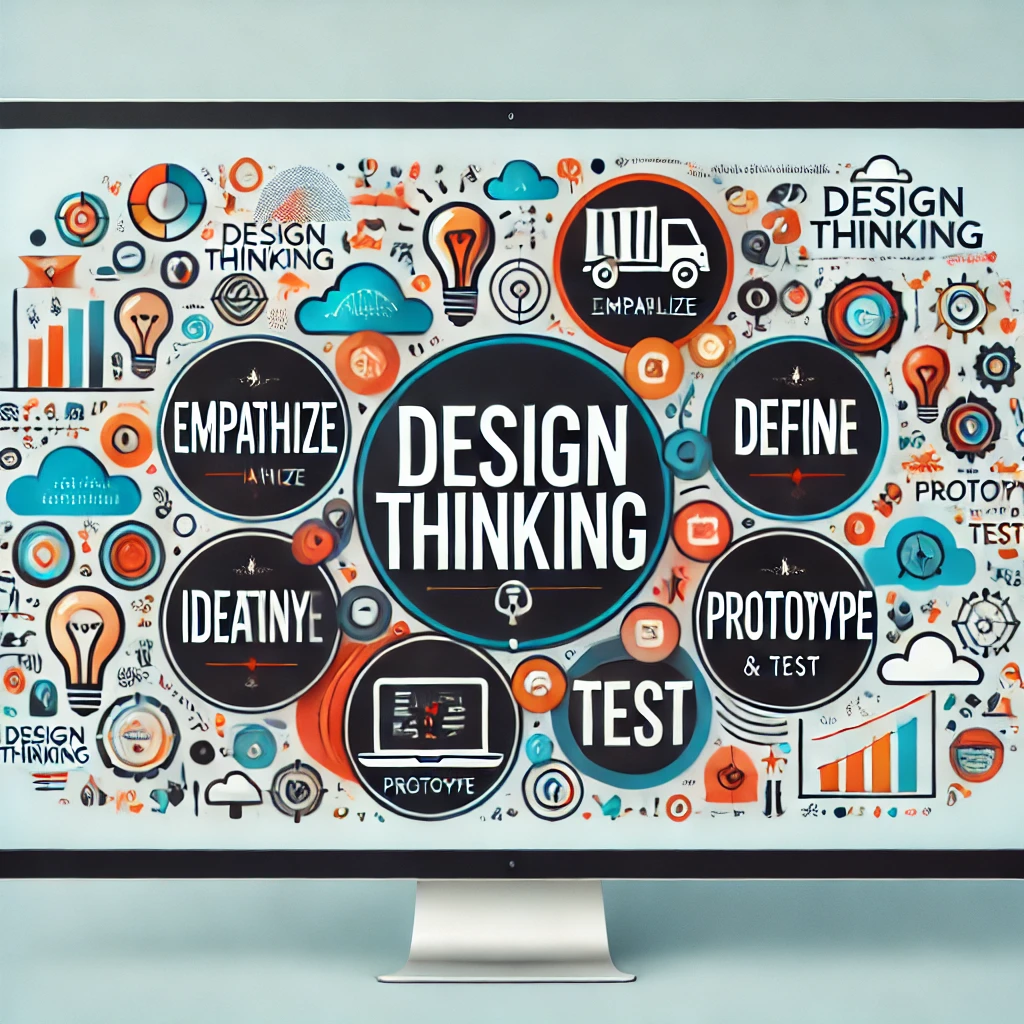Introduction
In today’s fast-paced business environment, staying ahead requires more than just traditional problem-solving methods. Design Thinking offers a human-centered approach that has proven to be a game-changer in delivering innovative and impactful solutions. Through real-world applications and case studies, this article explores how Design Thinking can drive successful project outcomes and shares best practices for implementation.
The Importance of Design Thinking: Lessons from Real Projects
1. Human-Centered Approach: In one of my recent projects, we were tasked with redesigning the user interface for a financial product. By applying Design Thinking, we started with empathy, conducting in-depth interviews with end-users. This approach allowed us to uncover pain points that were previously overlooked. As a result, we developed a user interface that not only improved functionality but also resonated emotionally with the users, leading to higher customer satisfaction and engagement.

2. Fostering Innovation: During another project focused on developing a new mobile app for a retail client, we leveraged Design Thinking to foster innovation. Our cross-functional team engaged in multiple brainstorming sessions, where we encouraged the exploration of unconventional ideas. This creative process led to the development of a unique feature that differentiated the app in a crowded market, significantly boosting its adoption rates.

3. Reducing Risk and Uncertainty: In a project aimed at improving a digital service platform, we used Design Thinking to prototype and test various concepts before full-scale development. By iterating on feedback from real users, we were able to refine our solution early in the process. This iterative approach minimized risks and ensured that the final product was both viable and aligned with user needs.

Best Practices for Implementing Design Thinking: Insights from the Field
1. Start with Empathy: In a recent initiative to revamp a customer support system, we kicked off the project by immersing ourselves in the user experience. We interviewed support agents and customers to understand their challenges and needs. This empathetic approach was crucial in defining the problem accurately and setting the stage for effective solutions.

2. Encourage Cross-Disciplinary Collaboration: One of the key factors behind the success of a product launch I managed was the collaboration between diverse teams. By bringing together designers, developers, and marketers, we were able to combine different perspectives and expertise. This collaboration not only accelerated problem-solving but also ensured that the final product was well-rounded and market-ready.

3. Embrace Iteration: In a project where we were developing a new feature for an existing software product, iteration played a vital role. We created several prototypes, each time gathering feedback from users and making necessary adjustments. This iterative process allowed us to continuously improve the product until we achieved a solution that met all user requirements and exceeded expectations.

4. Prototype Early and Often: In the early stages of designing a new e-commerce platform, we focused heavily on prototyping. By developing and testing low-fidelity prototypes, we were able to quickly validate our ideas and make informed decisions. This approach not only saved time and resources but also helped in aligning the final product with user expectations.

5. Test with Real Users: In a project that involved upgrading a mobile application, testing with real users was a game-changer. By observing how users interacted with the app, we identified several usability issues that were not apparent during the design phase. Addressing these issues before the final release ensured a smooth and positive user experience.

Conclusion:
Design Thinking is not just a methodology; it’s a mindset that transforms how projects are executed. By applying Design Thinking in real-world scenarios, as demonstrated in these case studies, you can drive innovation, reduce risks, and deliver solutions that truly resonate with users. Start incorporating these best practices into your projects, and watch your ideas evolve into impactful solutions.ve beyond automation and achieve innovation. By embracing Agile delivery and leveraging AI, Blockchain, and Cloud, organizations can improve efficiency, reduce costs, and enhance customer experiences. The future of project management is here – let’s embrace it!
